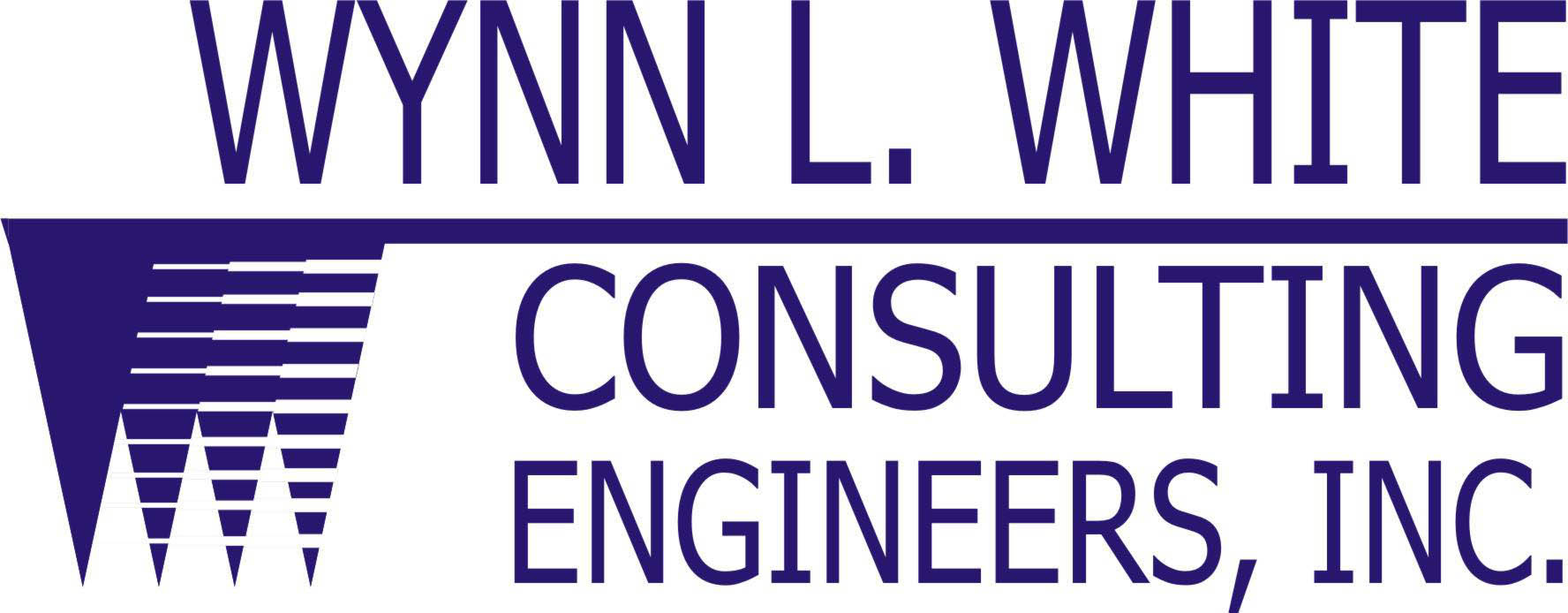…But you might be sorrier if you don’t.
I got a call last week to visit a project site where the Owner is renovating a gym built in the ’30s and turning it into a library. The Contractor has gutted the building, and as it turns out, there was felt paper and granular material beneath the hardwood floor (treated with creosote) that acted as a damp proofing layer for the gym floor. Keep in mind that use of creosote as damp proofing in the ’30s was a good way to protect wood floors, and at the time was considered a cutting edge practice–like asbestos oven mitts. When demolition began, the material was disturbed, and suddenly we had some environmental issues.
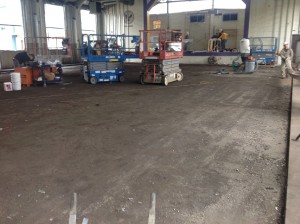
Floor after removal was complete.
What type of issues?
For starters, the material gave off a distinct odor when disturbed. If you’ve smelled railroad ties or telephone poles after they’ve been treated, you get the idea. Add in an HVAC air intake close by, and building occupant complaints and Indoor Air Quality issues may follow.
Welcome to one result of the Law of Unintended Consequences. And what about exposure risk for the contractor’s workers who are disturbing these materials? We conducted air sampling in the work area, adjacent buildings, and nearby areas outside. The good news was the air quality wasn’t impacted, but the creosote odor led to complaints and decreased productivity. Although difficult to quantify costs, complaints and decreased productivity affect the bottom line.
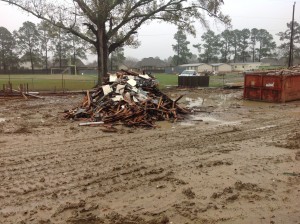
Debris stored on the job site.
And as luck would have it (you might say bad luck), the Contractor stored some of the debris in piles at the back of the site. This would not have been a problem if the Contractor had complied with his Stormwater Pollution Prevention Plan (SWPPP), and if it hadn’t rained so much.
The Contractor had an SWPPP on this project, but unfortunately, didn’t maintain his silt fencing and didn’t protect the existing storm water inlets. So it was no surprise when I saw a sheen in one of the ditches at the back of the site. And yes, we followed it back to an unprotected storm water inlet near one of the debris storage piles.
Failure to comply with Stormwater Protection regulations places the Contractor at risk, and also can affect the owner
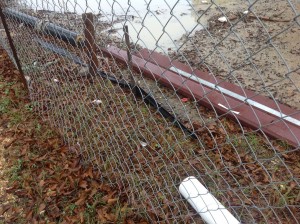
Defective silt fencing.
Periodic inspections of these controls were performed, and the Contractor knew maintenance of storm water protection controls was required, but lapses in storm water protection still occurred. If regulatory officials observed the deficiencies during a site inspection, the potential penalties were considerable.
What about the debris?
Clearly, the Owner, Architect, and the Contractor didn’t know these materials were beneath the gym floor. Although the Contractor must characterize waste prior to disposal, there was no way to anticipate the presence of this material–a classic unforeseen site condition. But the waste remained, and the question became, “ok, now what?”
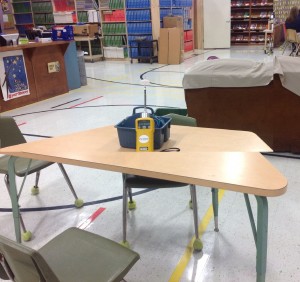
RAE Systems Mini-RAE used to measure volatile organic compounds.
Generally speaking, wood treated with creosote may go to the landfill as construction debris. But what about the paper and the granular material? Better check with your state regulatory agency (and if necessary, EPA) for waste disposal requirements. Also, it’s a good idea to check with the landfill handling your project’s waste stream–what do they say?
Insisting on proper waste characterization (along with any laboratory analysis as backup) can help Owners and Contractors avoid improper waste disposal and possible regulatory violations.
Have questions about your renovation or demolition project? Contact me for a consultation to protect yourself, your employees, occupants, and workers.
Stay in compliance, my friends.
Chris White, P.E., LEED AP has been helping clients solve problems for over twenty years as The Most Interesting Engineer in the World. You can follow him on Twitter@ChrisWhitePE.
